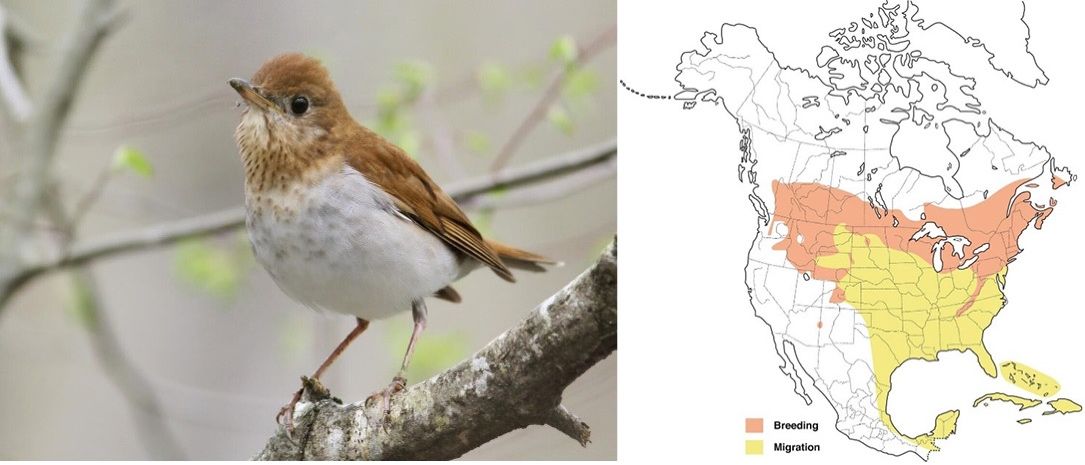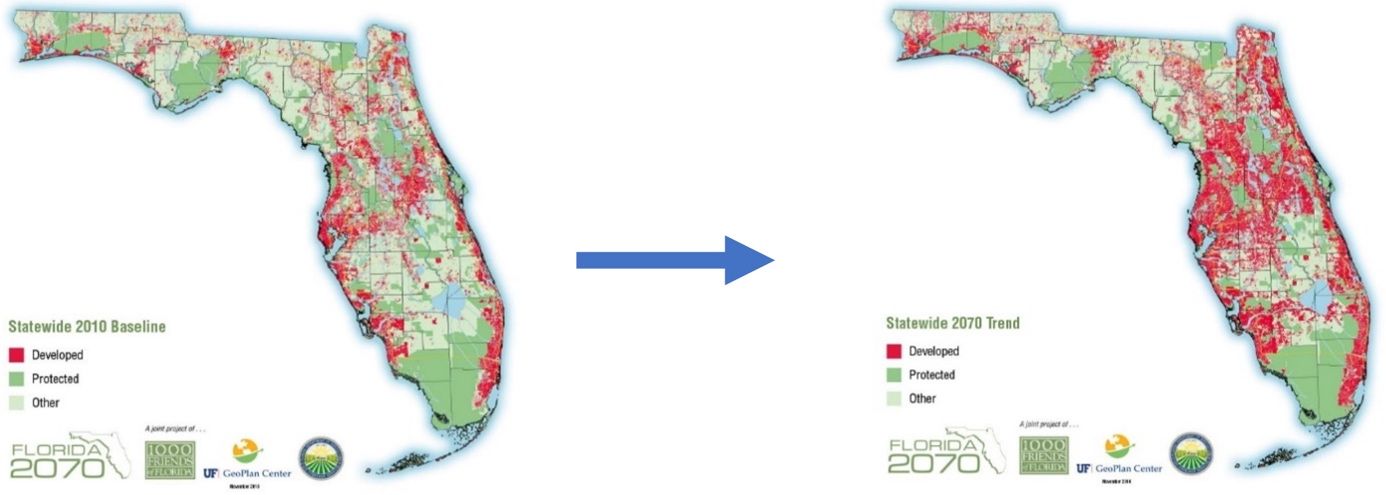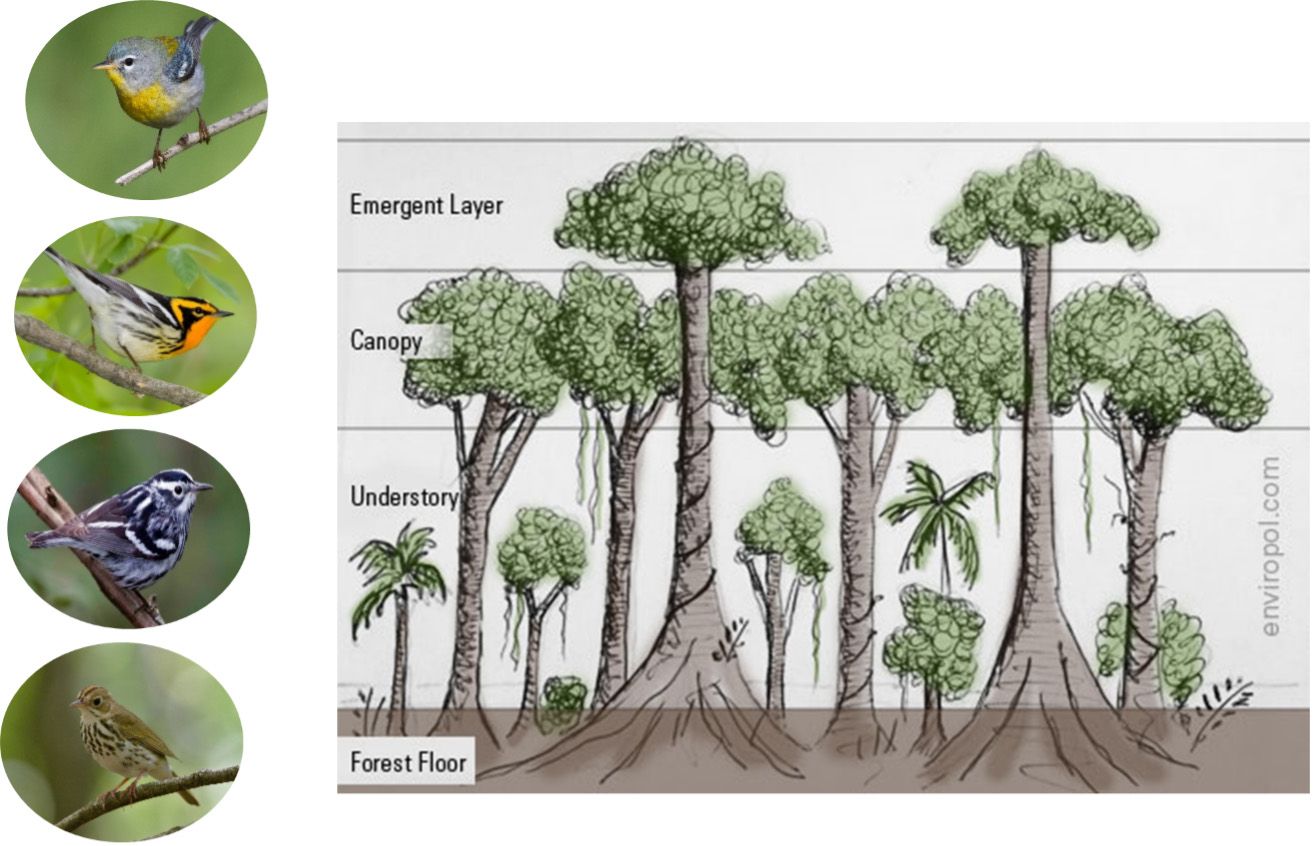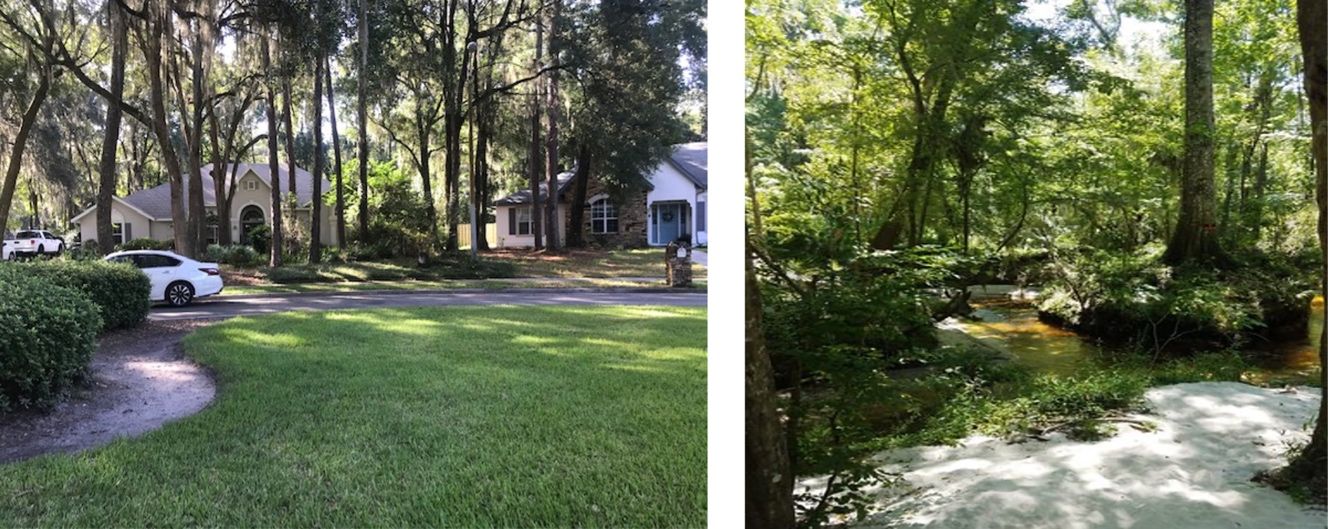Introduction
The purpose of this fact sheet is to report on the types of birds that use urban habitats during the spring and fall migration seasons. This report can be used by policymakers, city/county planners, developers, and citizens alike to address ways to conserve urban habit for birds during migration. During migration, birds travel from their northern breeding grounds to their southern wintering grounds and vice versa. Specific reasons why birds migrate are still not completely understood, but one thought is that birds in North America migrate north to follow new vegetation growth during the spring and return south away from dying vegetation and toward more green vegetation in the fall., essentially following the wave of food resources (La Sorte and Graham 2021). These migration events can be triggered by many things, including genetic predisposition of the birds, lower temperatures, or changes in day length (Powell 2017). Some of these migratory journeys can be thousands of miles long (e.g., from South America to Canada), and birds that make these long journeys must stop at habitats along the journey to replenish reserves and rest. These areas are called stopover habitats. Stopover habitats are vital for avian conservation, and more research is needed on how specific types of habitats can act as important stopover sites. Florida is in the middle of an important migration route for many birds. When birds are flying north, going through Florida during spring migration, some will have just crossed the Gulf of Mexico or the Caribbean Sea. When they are migrating south in the fall, some are preparing to cross these same bodies of water. These birds use Florida to either prepare for a long journey across water or recover from a long flight and prepare to continue north. Other birds migrate just to the southern tip of Florida.
Stopover habitats that birds use during migration can differ from breeding habitats. Although some birds might require large expanses of forest to successfully breed, during migration, they may use a variety of habitats, including urban forest fragments (Amaya-Espinel & Hostetler 2019; Archer et al. 2019). The Veery (Catharus fuscescens) is a good example (Figure 1a). Veerys breed in central and northern parts of the eastern United States (Figure 1b). During breeding times, they are sensitive to fragmented landscapes and primarily breed in large tracts of forest. Many species breed almost exclusively in unfragmented forests, such as the northern hardwood forests in the upper Midwest. However, they use small forest fragments, clear-cuts, residential trees, and forest edges while migrating to their breeding grounds in South America (Figure 1b) (Rodewald & Brittingham 2004).

Credit: Andy Eckerson Macaulay Library at the Cornell Lab of Ornithology ML98419671
Urbanization threatens bird habitat: Urbanization threatens bird habitat through loss of available habitat, novel predators (like feral cats), and light pollution, among other things. Urban land expansion is rapid, visible, and irreversible. Growth projections estimate that by 2050, global human populations will increase by 2 billion people(Roser 2013). These trends hold true for Florida as well. The Florida 2070 Project(1000 Friends of Florida, UF GeoPlan Center, & Florida Department of Agriculture and Consumer Services 2016) estimated that in 2010, 18 percent of land in Florida was classified as developed. However, by 2070, the Project predicts that developed land will increase to 33 percent in Florida (Figure 2). These recent trends in urbanization point toward a need to understand how birds use urban habitats.

Credit: 1000 Friends of Florida, UF GeoPlan Center, & Florida Department of Agriculture and Consumer Services
Many breeding bird species are harmed by the conversion of forest areas to urban areas (urbanization). Specialized bird species such as the Veery are impacted by urbanization (Figure 1, left); the Veery requires large expanses of deciduous forests for breeding (Archer, Hostetler, Acomb, & Blair 2019). Although urban areas contain some forest fragments, they are not suitable for many species to breed. However, they can still provide important habitat for foraging and movement during non-breeding times. Previous studies have shown that birds can use urban habitats during migration (Archer, Hostetler, Acomb, & Blair 2019).

Urban stopover habitats: There are many types of urban habitats, including commercial areas, transportation corridors, forest fragments, industrial areas, and residential communities. In this fact sheet, we focus on comparing urban forest fragments and residential neighborhoods as potential urban bird stopover habitat. The vegetation type and structural differences of these urban sites change the abundance and type of birds that use them because different birds use different parts of trees/forests for foraging (Figure 4). Canopy-affiliated species, like the Northern Parula (Setophaga americana), and the Blackburnian Warbler (Setophaga fusca) normally forage in and around the upper strata of the forest. Black-and-white Warblers (Mniotilta varia) use the understory and midstory and can be observed moving along the trunks of trees searching for grubs and insects in the bark. Finally, many species can be found primarily on the ground. For example, Ovenbirds (Seiurus aurocapilla) mainly forage in leaf litter for insects and other invertebrates. Because of these various behaviors, urban areas that maintain vegetation structure at the ground, understory, midstory, and canopy will be able to support a more diverse bird community.
To better understand which types of urban habitats are valuable for specific migratory species, we compared the diversity of migratory bird species that used urban forest fragments vs residential areas with tree canopy in Gainesville, Florida. Results from this study are summarized in this fact sheet and can help inform urban planners/developers and homeowners in the southeastern United States of important characteristics of the vegetation migratory birds use.
Study
We conducted point counts in urban forest fragments or residential neighborhoods throughout spring and fall migration in 2020. Point counts are a survey method in which an observer stands at a single point within a selected area and identifies all birds seen or heard. For these surveys, we selected urban forest fragments between 20 and 400 acres in area and paired them with an adjacent residential area. In each of the paired fragment/residential areas, we conducted multiple matched point counts. Point counts were completed (1) at the edge of the fragment, (2) a random distance inside the fragment, and (3) the same random distance inside the residential area (Figure 4). At each site, we also collected vegetation measurements, such as percent ground cover, percent canopy cover, and the number of large and small trees, to assess factors that might cause birds to use certain areas over others.

Credit: Ryan Buron
We identified 44 migratory bird species. Ten species (23%) preferred urban forest fragments; only 2 species (5%) preferred residential areas; and 32 species (72%) did not show any preference (Table 1). Species like the Chestnut-sided Warbler (Setophaga pensylvanica), Worm-eating Warbler (Helmitheros vermivorum), and Veery (Catharus fuscescens) significantly preferred the forest fragments. The Red-eyed Vireo (Vireo olivaceus) and the Ruby-throated Hummingbird (Archilochus colubris) preferred the residential habitats. Thirty-eight percent of birds that use areas below the canopy preferred the fragments compared to only 4 percent preferring the residential habitat. However, species that mainly forage in the canopy were observed using both habitats. Only one of the 18 canopy species (the Red-eyed Vireo) showed preference for the residential habitat. The other 17 species had no preference (Table 1).

Credit: Ryan Buron
There were clear vegetation differences between forest fragments and residential habitats. Forest fragments had more trees (small and large), canopy cover, and bare soil. Residential habitats contained more impervious surface and mowed lawns (Figure 5).Residential areas were used by many of the canopy-affiliated species, although they typically lacked the necessary understory vegetation. However, statistical analyses indicated that residential areas that maintained more vegetation at the ground, understory, midstory, and canopy compared to other residential sites, attracted greater abundance and diversity of migratory birds compared to other residential sites that were more “urban,” with a higher percentage of mowed lawns and impervious surfaces.
How to Create Migratory Bird Habitat In Urban Areas
- Retain vegetation structure and trees in residential yards. Migratory bird habitat can be improved by maintaining vegetation at the ground, understory, and canopy in residential areas. Trees in residential areas, especially native trees, can support more insects, a food resource for many birds that are migrating through Florida. For example, a previous study found that native trees were more likely to host a greater number of caterpillars than non-native trees, and Carolina Chickadees (Poecile carolinensis) were more likely to forage on these native trees (Narango,Tallamy, &Marra2017). As a bird is flying over the top of residential habitats, canopy cover from these large trees could entice them to use the habitat to forage. Understory and ground vegetation in residential yards also plays a major role in shaping the bird community because it attracts species that primarily forage under the tree canopy.As stated above, bird species use different parts of the forest, so maintaining vegetation at multiple levels in residential habitats can increase bird diversity in these habitats.
- Retain and manage forest fragments in and around urban areas. Migratory birds can use forest fragments, even small ones (<20 acres), as stopover habitat. A lot of these forest fragments are used for passive recreation, like walking or jogging, but are also used by many species of birds during migration. Some migrating species prefer these forest fragments and tend to avoid residential areas. Retaining these habitats in urban areas, along with treed residential areas, helps to retain a diverse number of birds that use urban areas during migration. Our results are similar to a study in south Florida, in which researchers found that many migrating birds use tropical hammock forest fragments and residential areas as stopover habitat; however, some species were found more often in tropical hammock forest fragments (Main et al. 2011).
Conclusions
The results from our study show that managing and conserving fragments and residential vegetation is important for migrating birds. Bird use of these areas as stopover habitat should be considered when planning and managing residential areas. For many developers and city planners, it takes time and money to plan around trees and small forest fragments. Often, the interpretation of messages coming from conservationists is the need to conserve large, forested areas. However, viewing fragmented landscapes as useless can hurt conservation efforts. Although conserving large forests is important, conserving urban forest fragments and trees in residential areas is also important for bird conservation. City policies and management that retain forest fragments are ways to conserve residential trees and other native vegetation in yards.
Table 1. Individual species habitat preference between urban forest fragments and adjacent residential areas at 39 point-count locations in Gainesville, Florida. Table shows the abundance of each species at either the fragment or the residential area and vertical height strata classification (canopy or understory). Surveys completed at the edge were added to the habitat-type in which the bird was first observed. So, if a bird at the edge survey location was foraging on a tree in the fragment, that observation would be added to the column “fragment abundance.”
Citations
Carr, M. H. and P. D. Zwick. 2016. Technical Report Florida 2070: Mapping Florida’s Future – Alternative Patterns of Development in 2070. A research project prepared by the Geoplan Center at the University of Florida for the Florida Department of Agriculture and Consumer Services & 1000 Friends of Florida. http://1000friendsofflorida.org/florida2070/wp-content/uploads/2016/09/florida2070technicalreportfinal.pdf
Amaya-Espinel, J. D., and M. E. Hostetler. 2019. “The Value of Small Forest Fragments and Urban Tree Canopy for Neotropical Migrant Birds during Winter and Migration Seasons in Latin American Countries: A Systematic Review.” Landscape and Urban Planning 190. https://doi.org/10.1016/j.landurbplan.2019.103592
Archer, J. M. J., M. E. Hostetler, G. Acomb, and R. Blair. 2019. “A Systematic Review of Forest Bird Occurrence in North American Forest Fragments and the Built Environment.” Landscape and Urban Planning 185 1–23. https://doi.org/10.1016/j.landurbplan.2019.01.005
Fink, D., T. Auer, A. Johnston, M. Strimas-Mackey, O. Robinson, S. Ligocki, W. Hochachka, C. Wood, I. Davies, M. Iliff, L. Seitz. 2020. “eBird Status and Trends, Data Version: 2019; Released: 2020.” Cornell Lab of Ornithology, Ithaca, New York. https://doi.org/10.2173/ebirdst.2019
La Sorte, F. A., and C. H. Graham. 2021. “Phenological Synchronization of Seasonal Bird Migration with Vegetation Greenness across Dietary Guilds.” Journal of Animal Ecology 90 (2): 343–355. https://doi.org/10.1111/1365-2656.13345
Main, M. B., M. C. Christman, A. Karim, and M. Hostetler. 2011. “Species Richness and Diversity of Resident and Migratory Landbirds in Remnant Forest Patches and Residential Areas in the Florida Keys, USA.” International Journal of Ecology Volume 2011 (2011), Article ID 364213, 12 pages doi:10.1155/2011/364213
Narango, D. L., D. W. Tallamy, and P. P. Marra. 2017. “Native Plants Improve Breeding and Foraging Habitat for an Insectivorous Bird.” Biological Conservation 213:42–50. https://doi.org/10.1016/j.biocon.2017.06.029
Powell, H. 2021. “The Basics of Bird Migration: How, Why, and Where.” Retrieved August 04, 2021, from https://www.allaboutbirds.org/news/the-basics-how-why-and-where-of-bird-migration/
Rodewald, P. G., and M. C. Brittingham. 2004. Stopover Habitats of Landbirds during Fall: Use of Edge-Dominated and Early-Successional Forests.” The Auk 121 (4): 1040–1055. https://doi.org/10.1093/auk/121.4.1040. Retrieved February 155, 2023, from https://academic.oup.com/auk/article/121/4/1040/5562242
Roser, M. 2013. "Future Population Growth." Our World in Data Retrieved from: https://ourworldindata.org/future-population-growth